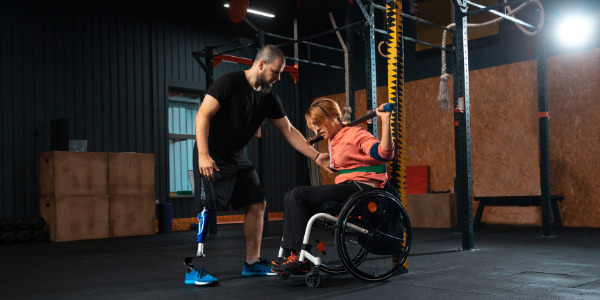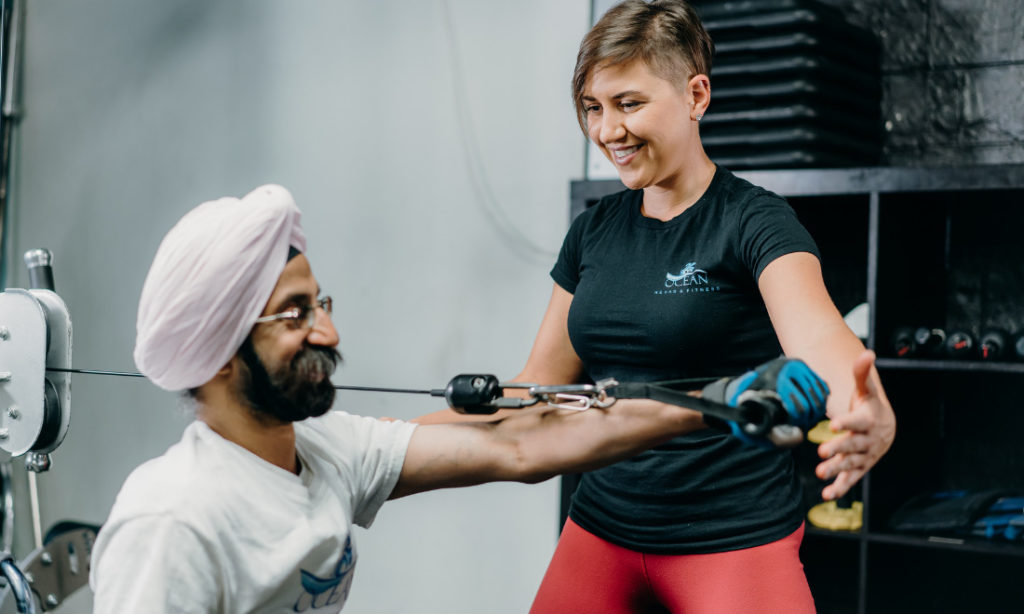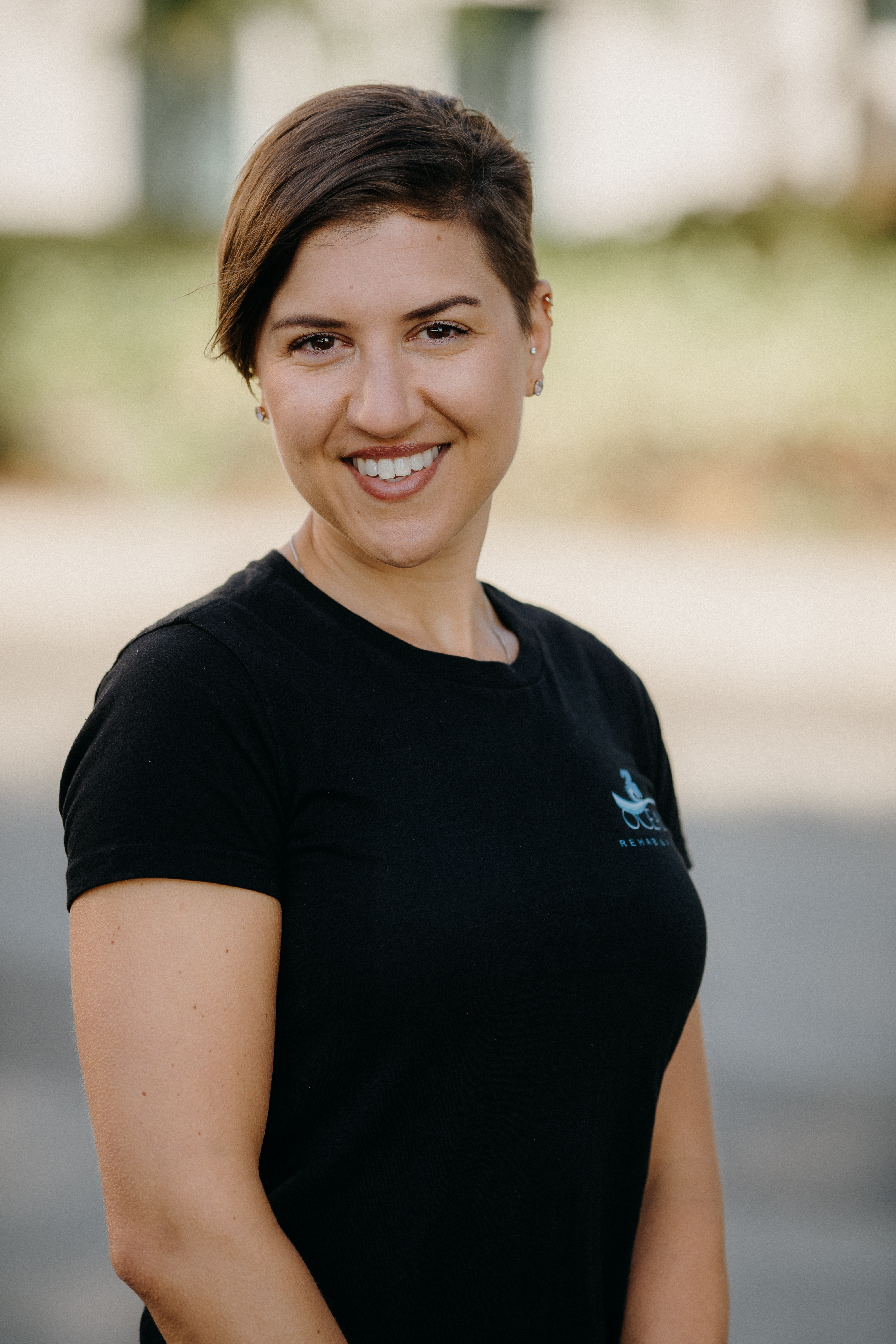“Today, 1 in 5 Canadian adults are currently living with a disability, and this number is expected to grow exponentially as our population ages. What many may be surprised to know is in Canada, almost 50% of adults have or have experienced a permanent or temporary physical disability or live with someone who has.” – Rick Hansen, Founder, Rick Hansen Foundation
That’s right, people living with disabilities are on the rise. In fact, this cohort of people are one of the world’s largest minority groups. Do we have the knowledge to accommodate someone living with Parkinson’s to take one of our fitness classes? Are our fitness spaces inclusive and accessible to accommodate, say a person using a wheelchair or a scooter?
The good news is that there are a few things we can all do right now to make sure that our businesses are more inclusive.
Be aware of diversity
People with blond hair do not all have the same texture, length, or shade of blond hair, just as people with the same given disability do not all share the same physical limitations, reasons for requiring their assistive devices, or personal goals. Clients with disabilities will come from all walks of life, all kinds of communities, and all kinds of cultural contexts, and understanding that groups are composed of individuals is truly the first step in breaking down barriers.
Choose purposeful language
It’s very important to recognize that there are different ways to address someone with a disability. Referring to someone with a disability as ‘he is a person with Multiple Sclerosis is what we called people-first language. Although you may notice here in Canada that it is widely accepted to use this language, some people may prefer identity first language. For example, this language is highly favored in the Deaf and autistic communities. It is best to ask your clients what they prefer when you are making reference to them and their disability.

Recognize that wellness is an individual endeavor
One of the best ways to break down barriers to accessibility is to recognize that wellness is a very personal journey. It’s best to avoid using words like illness or patient in a fitness setting. Your client is not at the doctor’s office, they’re at the gym, and the gym may be a place where they already feel a bit uncertain.
Assess our spaces
You should consider checking in with the building where your sessions are held as they may have already done an accessibility audit. Unfortunately, many spaces, despite whatever laws or regulations may exist, aren’t set up with accessibility in mind—particularly older buildings.
Next, look towards the space where you will be holding your session. Assess, then ask yourself; if a person who struggles with walking or a person using a wheelchair came in to train, would they be able to get from station to station with relative ease and safety?
Educate ourselves on training clients with disabilities
Arguably one of the largest barriers for people living with disabilities to accessing fitness resources is the lack of education from us – their coaches! The course Breaking Barriers* is one first step in becoming an inclusive fitness trainer so that we can include everyone in our gyms and fitness classes across the nation.
In this course, we learn the fundamentals of working with clients living with physical disabilities. We dive into aspects such as adaptive equipment, disability-specific programming, disability considerations, and inclusive assessment protocols.
How will becoming an inclusive trainer benefit me?
When we can confidently take on a client who lives with a physical disability, we are increasing our potential demographic to choose from. This is a win-win because the bigger demographic means the more people we can help!
As fitness professionals, we are always striving for reasons why a client would train with us and not the next trainer. This leads to the next question…
What sets you apart from the competition?
As we hear the word inclusion being used more and more in the fitness industry, we see a trend for the future moving towards exactly this. Being prepared for this future by learning the necessary skills is what will set us apart from the competition and ultimately strengthen our brands as fitness trainers.
How do we take our coaching to the next level? Here is what the fit pros are saying about the continuing education course Breaking Barriers: Fundamentals of Training Clients with Physical Disabilities
“With Breaking Barriers, it took what I knew and grew it exponentially. In taking on a new client with a disability, I am equipped to ask better questions to not only develop better program designs but allow my clients to feel cared for.
This program is the first of its kind that I am aware of, and I will recommend to others in my field so they too can grow and understand and perhaps expand their clientele. This is a valuable use of any trainers time, especially Continuing Education time!” – Janet, CPT in Vancouver, Canada
With Canada’s population of people currently living with a disability at 22% and growing, it is pivotal that we, as fitness professionals take the necessary steps to keep up with this demographic. We not only benefit our own fitness businesses by welcoming this underserved cohort, but we help break barriers for our future, which in turn helps support a healthier inclusive world where everyone can participate!
Learn more about NACIF and Breaking Barriers below!
Zee https://vimeo.com/563028700



